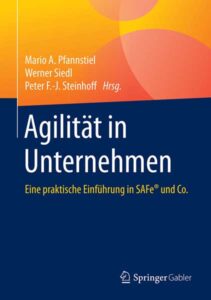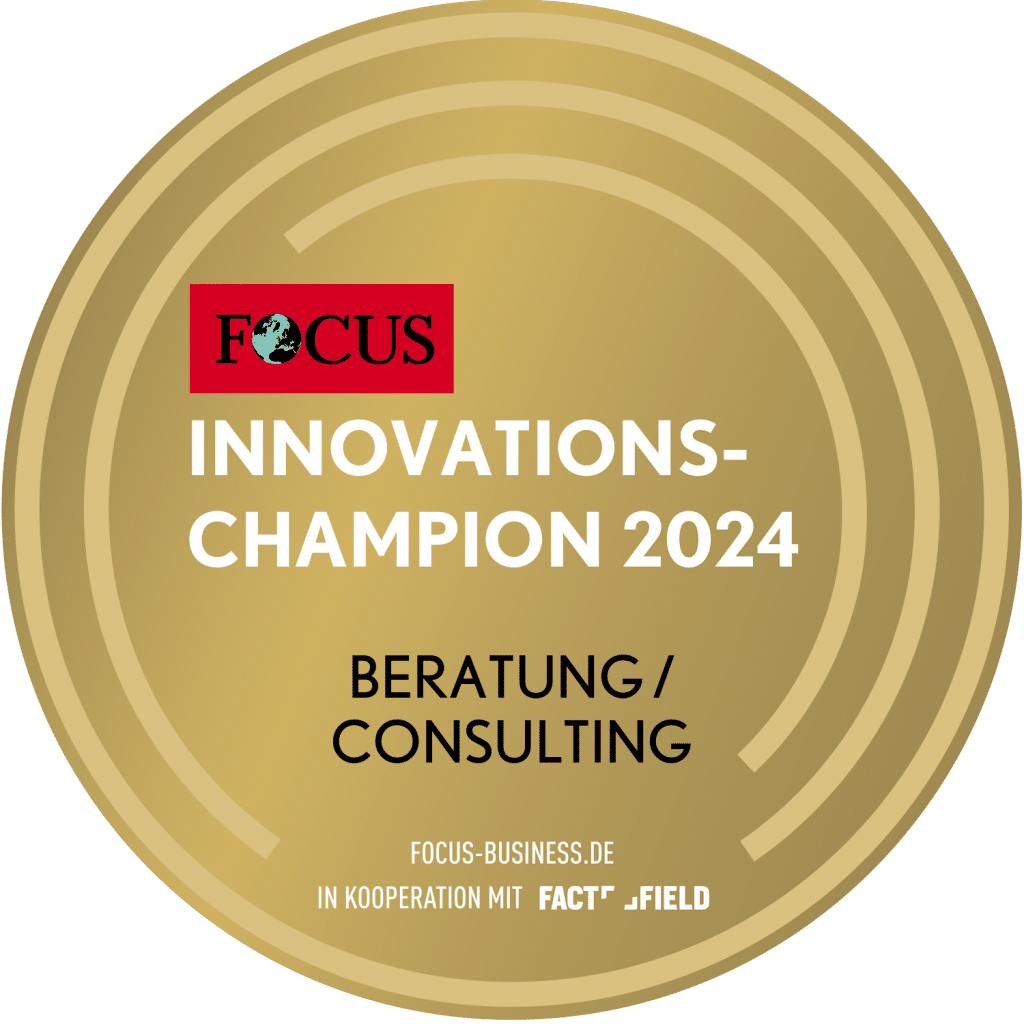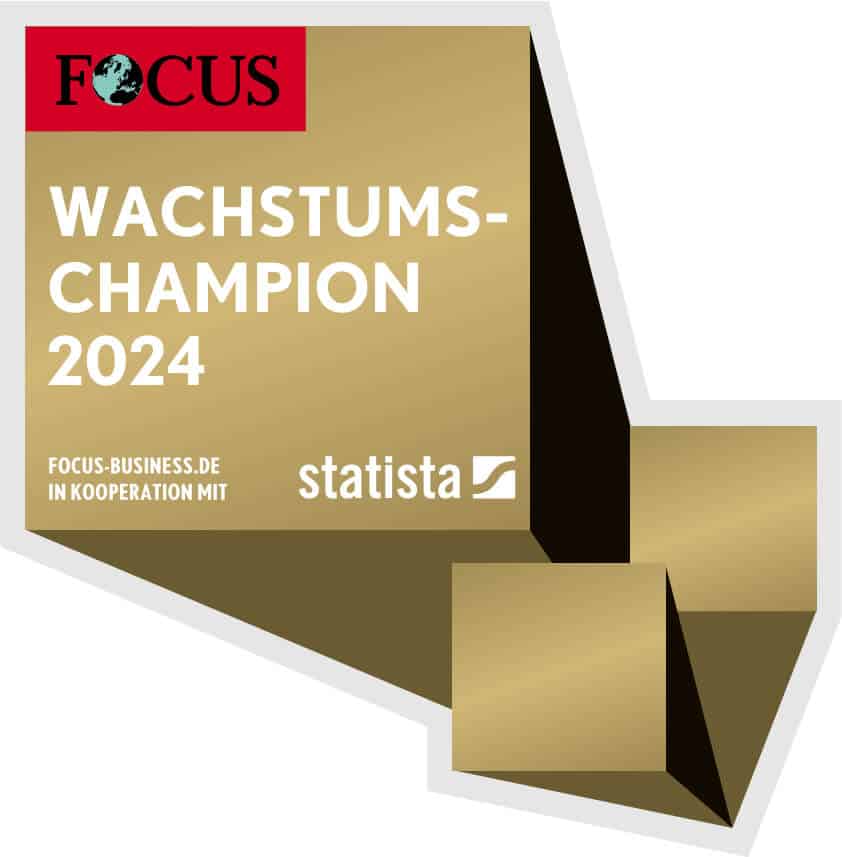At the beginning of the month, the anthology "Agility in companies. A practical introduction to SAFe® and Co.", edited by Mario Pfannstiel, Peter Steinhoff and Werner Siedl, published by Springer Verlag. It offers a comprehensive insight into the practical application of agile principles, in particular the SAFe® framework. In the interview, Siedl and Steinhoff answer the question of why their book makes a new contribution to the topic of agility and show the breadth of the subject.
Note from the editors: Read also part 2 of the interview with Peter Steinhoff and Werner Siedl Business agility: Continuous innovation through lean and agile practices
How we understand agility today
Katja Heumader: Hello Mr. Siedl, hello Mr. Steinhoff. First of all, congratulations on the publication of your anthology "Agility in companies". The idea of agile working originated in software development and is celebrating its 20th birthday this year. Countless books on agile working and agility in companies have already been published. What makes your book special?
Werner Siedl: In the 20 years since the Agile Manifesto the way we work has changed considerably. In this book, we look at the changes and their practical application. In the past, agile working was only established in software teams at an operational level. Today, agile and lean working is ideally applied throughout the entire company. Our new book describes how we understand agility today and how it is put into practice.
Peter Steinhoff: That's right, there are now several books on the subject of agility. We were aware of this when we started. What is new in our anthology is the focus on the agile scaling framework SAFe®. Oliver Mack also emphasizes this in his Book description I would like to emphasize that we have succeeded very well in docking onto SAFe® from different directions. Furthermore, the book thrives on the many examples of implementation in a wide range of industries and thus on its diversity and breadth. This means that both beginners with previous knowledge and experienced "agilists" who are looking for new impulses on this exciting topic can benefit from reading it.
KH: Which fields do the authors of your anthology come from?
PS: The authors are very diverse: from professors and their students to researchers, practitioners and consultants, everything is included. We are very proud of the fact that 34 authors took part. At just over 440 pages, the anthology is also a good size. The 21 chapters are divided as follows:
- Fundamentals of agility in the company
- Lean and agile leadership
- Business agility and organizational agility
- Practical part of SAFe® & Co. with examples of implementation
SAFe® framework: A holistic and sustainable approach to agility
KH: With Dean Leffingwell, you were able to win over the inventor of the SAFe® framework for a foreword. How does the SAFe® framework differ from other agile approaches?
WS: I am very grateful to Dean for writing the foreword. The SAFe® framework does not look at agility in isolation, but holistically and sustainably for the entire company. We are talking here about business agility, organizational agility, technical team agility in balance between agile and lean, i.e. effectiveness and efficiency.
KH: Leffingwell has played a major role in making agile working practicable even in large companies. How did he achieve this?
WS: Dean Leffingwell and his entire team have created great things by always thinking one or two steps ahead. The SAFe® framework currently comprises around 6,000 web pages and is updated and revised every year according to its own principles and methods. For me, it is not only the most widely used scaled framework in the world, but also the number one modeling of excellence for business in general in order to always create the greatest value for our customers.
KH: To what extent do (large) companies benefit from the introduction of the SAFe® framework?
PS: It is not only large companies that benefit, but every type of company, as the SAFe® framework uses state-of-the-art methods such as Objective Key Results (OKR), Portfolio Canvas, Participatory Budegting, Time Horizon, Capacity Allocation Guardrails, Design Thinking, Test Driven Development and DevOpsSec. It is a guide from the corporate strategy to the portfolio - the strategic level to the Agile Release Trains (ART), Agile Teams to the employee - to the operational level on how a modern way of working can function throughout the entire company in times of digitalization and ever faster changes.
"Nobody is perfect, but an agile team can be"
KH: Mr Siedl, you are a certified SAFe® Program Consultant yourself. Why did you decide to do this training? What convinced you about the SAFe® framework?
WS: My motto has always been "Nobody is perfect, but a team can be". I have spent my life looking for improvements in collaboration between people and how we can become even more effective and efficient ourselves and as a team. When I was introduced to the SAFe® framework four and a half years ago by a TCI partner colleague, I quickly realized how great the potential is. I learn more every day and am still fascinated by how and where agility and lean can be improved in combination. It's no longer about teams, but about entire companies. In the end, it's about the fact that we only have this one planet Earth and we need to find ways to work together, not side by side or against each other. I think that the SAFe® framework also shows us a practical way forward here. That's why I have adapted my motto: "Nobody is perfect, but agile teams can be."
KH: Mr. Siedl, Mr. Steinhoff, thank you very much for the interesting interview and I wish you every success with your book!
The interview with Prof. Dr. Peter Steinhoff and Werner Siedl was conducted by Katja Heumader for the TCI editorial team.
"Agility in companies": theoretically sound and practical

The focus of "Agility in Companies" is on the practical application of the concepts. In addition to an introduction to the theoretical foundations, the contributors to the anthology cover various areas: Corporate and personnel management, organizational management, evaluation and controlling, decision-making behavior, roles in projects and the management of business processes.
"Agility in Companies" is aimed at internal and external practitioners for whom transformation management is at the center of their tasks. Coaches, business managers, managing directors and other decision-makers will benefit from the comprehensive perspectives in this anthology, as will academics and lecturers specializing in organization, agile management, project management, business management, change management, product management, development, process management and strategic management.
Note from the editors:
Buy the entire book or individual chapters directly here as eBook for Euro 46.99 (complete edition) or Euro 26.70 (individual chapters)!
Or order the anthology as a high-quality Hardcover for Euro 59,99!
Source cover image: © Tierney | Adobe Stock


